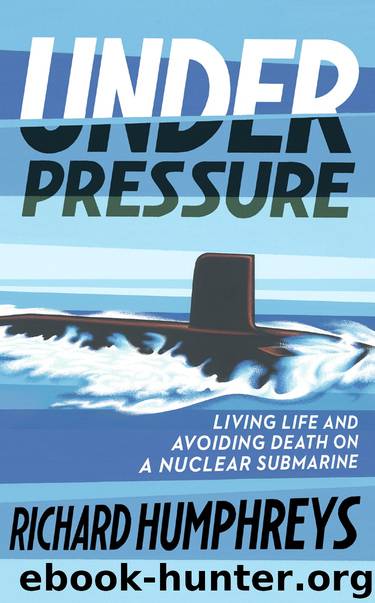Under Pressure: Living Life and Avoiding Death on a Nuclear Submarine by Richard Humphreys

Author:Richard Humphreys
Language: eng
Format: epub
Tags: 20th Century, Cold War, Great Britain, History, Military, Weapons & Warfare
Publisher: Hanover Square Press
Published: 2020-06-02T03:00:00+00:00
Nuclear reactor
The function of the nuclear reactor was simple, to produce as much heat as possible. It did this by generating steam to move the propeller and electricity to provide all the power the boat needed to function. The fuel used in the reactor was the highly radioactive material known as uranium, which can do great damage if not managed correctly. The MEO and his team of elite engineers monitored this constantly throughout the patrol to keep the submarine and its crew safe.
When the reactor was flashed up for the first time a neutron was fired at a uranium atom – when it hit that atom it then split or fissioned, releasing energy and then freeing more neutrons. These neutrons continued the same actions of splitting when they hit the uranium atoms. This is known as a chain reaction and once it becomes self-supported the reactor is said to be critical, producing enormous amounts of heat.
The energy that the reactor gave off was used for one thing – to heat water. There were two circuits in the reactor that both passed water through a heat exchanger. One was at a very high pressure so it prevented the water from boiling, and one was at a much lower pressure that was boiling so it created steam. It was this steam that generated the power to control the turbines which provided all the capacity the submarine needed to function. Think of an old steam engine on a train, but replace the coal with uranium and the same principle holds; the process of heating water created steam, which drove the turbines that provided the submarine’s power for the propeller, life systems (fresh-water and oxygen production) and all the electrical functions on board.
To control the reactor output control rods were used to regulate the amount of fission being generated. These control rods were made of elements such as hafnium and boron which, when immersed, soaked up energy and thus reduced the output of the reactor. Conversely, if they were gradually lifted from the reactor core the chain reaction would increase and so the power generated for production of steam would increase. If the reactor needed to be shut down for any reason, control rods would be fully lowered into the reactor, causing it to scram (shut down). A scram might occur for many reasons: a system failure, an error within the workings of the reactor itself, a stuck control rod or rods being removed too quickly when the reactor was being flashed up for the first time or restarted; or something more sinister that required an immediate shutdown, like a fire or a problem with a steam generator.
Given its size – the exact dimensions of the submarine’s nuclear reactor were a secret, but its inner core was about as large as a wheelie bin – its power was incredible; the reactor could supply sufficient electricity to power a town the size of Swindon. Electricity was required on the boat not only to run its
Download
This site does not store any files on its server. We only index and link to content provided by other sites. Please contact the content providers to delete copyright contents if any and email us, we'll remove relevant links or contents immediately.
Hit Refresh by Satya Nadella(8337)
The Girl Without a Voice by Casey Watson(7262)
When Breath Becomes Air by Paul Kalanithi(7261)
Do No Harm Stories of Life, Death and Brain Surgery by Henry Marsh(6335)
A Court of Wings and Ruin by Sarah J. Maas(6071)
Hunger by Roxane Gay(4216)
Shoe Dog by Phil Knight(4163)
Everything Happens for a Reason by Kate Bowler(4067)
A Higher Loyalty: Truth, Lies, and Leadership by James Comey(4031)
The Rules Do Not Apply by Ariel Levy(3905)
Tuesdays with Morrie by Mitch Albom(3832)
The Immortal Life of Henrietta Lacks by Rebecca Skloot(3826)
How to Change Your Mind by Michael Pollan(3673)
Millionaire: The Philanderer, Gambler, and Duelist Who Invented Modern Finance by Janet Gleeson(3568)
All Creatures Great and Small by James Herriot(3514)
Elon Musk by Ashlee Vance(3454)
Tokyo Vice: An American Reporter on the Police Beat in Japan by Jake Adelstein(3439)
Man and His Symbols by Carl Gustav Jung(3315)
The Money Culture by Michael Lewis(3284)
